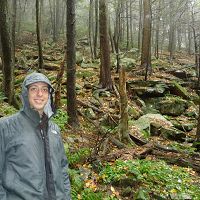Yu et al., 2016
Cyber-Innovated Watershed Research at the Shale Hills Critical Zone Observatory
Yu Xuan, Christopher Duffy, Yolanda Gil, Lorne Leonard, Gopal Bhatt, and Evan Thomas (2016)
IEEE SYSTEMS JOURNAL, 10 (3): 1239 - 1250
-
Shale Hills, GRAD STUDENT
-
Shale Hills, INVESTIGATOR
-
Shale Hills, COLLABORATOR, GRAD STUDENT
-
Shale Hills, GRAD STUDENT
Abstract
Cyberinfrastructure is enabling ever more integrative and transformative science. Technological advances in cyberinfrastructure have allowed deeper understanding of watershed hydrology by improved integration of data, information, and models. The synthesis of all sources of hydrologic variables (historical, real time, future scenarios, observed, and modeled) requires advanced data acquisition, data storage, data management, data integration, data mining, and data visualization. In this context, cyber-innovated hydrologic research was implemented to carry out watershed-based historical climate simulations at the Shale Hills Critical Zone Observatory. The simulations were based on the assimilation of data from a hydrologic monitoring network into a multiphysics hydrologic model (the Penn State Integrated Hydrology Model). We documented workflows for the model application and applied the model to short-time hyporheic exchange flow study and long-term climate scenario analysis. The effort reported herein demonstrates that advances in cyberscience allows innovative research that improves our ability to access and share data; to allow collective development of science hypotheses; and to support building models via team participation. We simplified communications between model developers and community scientists, software professionals, students, and decision makers, which in the long term will improve the utilization of hydrologic models for science and societal applications.
Citation
Yu Xuan, Christopher Duffy, Yolanda Gil, Lorne Leonard, Gopal Bhatt, and Evan Thomas (2016): Cyber-Innovated Watershed Research at the Shale Hills Critical Zone Observatory. IEEE SYSTEMS JOURNAL, 10 (3): 1239 - 1250. DOI: 10.1109/JSYST.2015.2484219
 This Paper/Book acknowledges NSF CZO grant support.
This Paper/Book acknowledges NSF CZO grant support.
Explore Further




